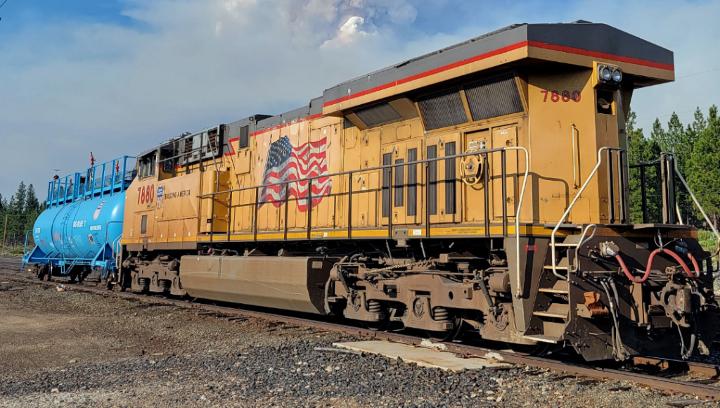Behind the Scenes: Partnering with Railroads to Improve Disaster Response in Texas
Railroads have dedicated firecar fleets to assist in putting out wildfires near tracks. Disaster preparedness is a cornerstone of maintaining safety and resilience in Texas, a state no stranger to natural hazards. From hurricanes along the Gulf Coast to wildfires in the panhandle and winter storms sweeping across the state, Texas railroads play a vital role in ensuring the safe movement of goods and people during emergencies. What often goes unnoticed is the behind-the-scenes collaboration between railroads, emergency managers, and local and state authorities to prepare for and respond to these events effectively. Hurricanes: Keeping Freight Moving on the Gulf CoastHurricanes pose one of the most significant challenges to Texas’ railroads. High winds, heavy rains, and flooding can disrupt rail operations, damage infrastructure, and hinder the delivery of essential goods like food, fuel, and medical supplies. To mitigate these risks, railroads take a proactive approach well before a storm makes landfall. Pre-Storm PreparationsRailroads monitor weather forecasts in real-time to anticipate the storm’s path and potential impacts. Once a storm is imminent:
Collaboration with Emergency ManagersRailroads work closely with state and local emergency management agencies to coordinate evacuation routes and emergency supply deliveries. They also provide critical data on rail crossings and track conditions, ensuring that first responders have up-to-date information during and after the storm. For instance, during Hurricane Harvey in 2017, railroads partnered with the Texas Department of Transportation (TxDOT) and the Federal Emergency Management Agency (FEMA) to transport relief supplies to affected communities. This collaborative effort was vital in overcoming challenges posed by flooded roads and highways. Winter Storms: Battling Ice and Freezing TemperaturesTexas’ rail network was put to the test during Winter Storm Uri in February 2021, which brought subzero temperatures and widespread power outages. Unlike hurricanes, which come with days of warning, winter storms can escalate rapidly, requiring railroads to act quickly to ensure safety. De-Icing and Track InspectionsRailroads employ specialized equipment to remove ice and snow from tracks and switches, ensuring trains can operate safely. Heated switch systems are also installed in critical areas to prevent ice buildup, allowing for uninterrupted service. Fuel and Supply TransportDuring winter storms, railroads prioritize the transportation of critical supplies like heating fuel, food, and medical equipment. In 2021, railroads worked with local utilities to deliver coal and natural gas to power plants, helping to stabilize the state’s energy grid during a time of crisis. Supporting First RespondersRailroads often serve as a lifeline during winter storms, delivering emergency supplies to remote areas cut off by icy roads. They also coordinate with local governments to ensure emergency responders can cross rail lines safely when responding to incidents. Wildfires: Safeguarding Rail Corridors in High-Risk AreasWildfires are a persistent threat in Texas, particularly during dry summers and periods of drought. Railroads take extensive precautions to minimize fire risks while continuing to operate safely in affected areas. Fire Prevention Measures
Rapid Response and RecoveryDuring wildfire outbreaks, railroads collaborate with local fire departments and emergency management teams to protect rail infrastructure and nearby communities. In some cases, railroads have transported fire suppression equipment and water tankers to remote areas inaccessible by road. Post-Fire RestorationOnce the fire is contained, railroads conduct extensive inspections to assess damage to tracks, bridges, and signaling systems. Crews work around the clock to restore service, ensuring that vital supply chains can resume as quickly as possible. Collaboration at Every LevelTexas railroads don’t operate in isolation during emergencies—they are integral partners in the state’s disaster response network. Key collaboration efforts include:
A Commitment to ResilienceWhether facing hurricanes, winter storms, or wildfires, Texas railroads are a vital part of the state’s disaster preparedness and response strategy. Their investments in technology, infrastructure, and partnerships ensure that they can operate safely and efficiently—even under the most challenging conditions. As natural disasters become more frequent and severe, the collaboration between railroads and emergency responders will remain critical to protecting lives, infrastructure, and the economy in Texas. By working together, Texas is building a more resilient future, where railroads continue to play a key role in responding to and recovering from whatever challenges come its way. |


